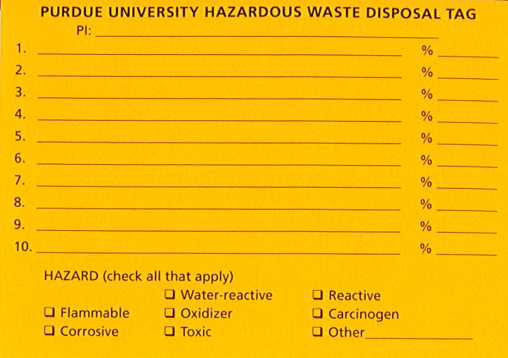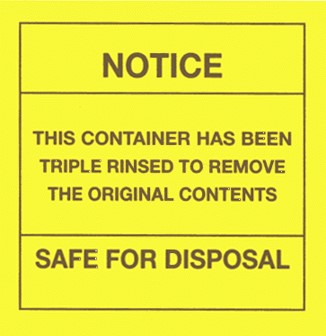Lab Safety Training and Resources
Members of the Physics and Astronomy Department (Faculty, Staff, Post-doctoral Researchers, Graduate Students, and Undergraduate Students carrying out Research in any form) depending on their work environment must successfully complete at least one of the following safety training.
- Link to the training website.
- Required when using chemical products per manufacturer’s intended purposes in amounts, extent, duration, and frequency commensurate with consumer use.
- This is a short, 15 minute video training. Once complete, please fill out the Qualtrics Survey and list Andy Robison as your supervisor for purposes of record keeping.
- Please repeat as needed.
- Link to the training website.
- Required when chemical use or exposure is a routine or significant part of the job and does not involve the "laboratory use of hazardous chemicals". If it does, your lab would have a CHP program (see below).
- This is a 45 minute video training. Once complete, please fill out the Qualtrics Survey and list Andy Robison as your supervisor for purposes of record keeping.
- Repeat annually.
- Information about CHP-Initial and CHP-Refresher. PIs can choose to use the REM CHP document (PDF) for their lab or take specific relevant sections and create a shorter version for their research team. Members of each research team should check with their supervisor as which document they should review.
- The professor in charge of a research laboratory involved in the “laboratory use of hazardous chemicals” is responsible for preparing and documenting an initial training that everyone working in the lab has to do before they start their research.
- CHP-initial training must include a review of the lab-specific CHP, hazard assessments, standard operating procedures (SOPs), and any other protocols or requirements in their entirety.
- CHP refresher training must include a review of the laboratory-specific CHP as well as chemical spill and laboratory emergency procedures.
- CHP refresher training must be completed annually.
- If you are a member of the PRIME Lab or a visiting PRIME lab, you need to do a safety training specific to the lab.
- Information about the PRIME Lab safety.
- Those outside of PRIME Lab are welcome to use any of this training information but PLEASE send any test results to your PI and not to PRIME Lab staff. Test results received from anyone not employed by PRIME Lab will be deleted.
- Lockout/Tagout, Confined Space Entry, Crane Safety and CHP SOP's were created specifically for PRIME Lab and would need modification and certification by the lab PI for use elsewhere.
- Purdue Radiological and Environmental Management (REM) unit also has a variety of lab specific trainings (Biological materials, laser safety, radiation, etc.). See the complete list of trainings.
- No chemical waste should ever be disposed of in a sink on campus.
- All chemical waste containers must have an orange Hazardous Waste Disposal label (see below for image)

- Hazardous Materials Pickup Request Form and instructions.
- For unknown chemical waste.
- If you have empty chemical containers, please rinse it three times, then put the yellow “Safe for Disposal” label on it and leave it outside your lab door. (see below for image).

- You can get the Orange and Yellow labels above from Andy Robison in PHYS 217 D.
All gas cylinders must be stood upright and secured with an approved cylinder support strap or chain. Always firmly cap any cylinders not in use. Uncapped cylinders should be supported individually, not ganged together behind a single chain. Cylinder carts are not a safe way of securing uncapped gases, even "only for a short time."
Maximum quantity and size limitation for compressed or liquefied gas cylinders in laboratory work areas is in below table. The allowed quantity is based on a 500 ft2 area, and depends on whether the lab is sprinklered or not.
|
10x50" cylinders allowed |
sprinklered |
unsprinklered |
|
Flammable Gases and/or Oxygen |
6 |
3 |
|
Liquefied Flammable Gases |
3 |
3 |
|
Gases with Health Hazard Ratings of 3 or 4 |
3 |
3 |
All cylinders and lecture bottles must be labeled at all times with the name of the contents, name of the vendor, and the name of the responsible Purdue staff member. Use a wheeled cylinder cart and secure the chain or strap carefully for transporting a capped cylinder. Do not “store” the cylinder on the cart.
Physics and Astronomy Safety Committee
Members
Oana Malis (chair), Marc Caffee, Greg Chmiel, Ronald Fross, Tongcang Li, Jing Liu, Andy Robison, Sergei Savikhin, Keith Schmitter, Eric Schultz, Fuqiang Wang, Tiancong Zhu
Meetings
-
April 8, 2026; 2:00 PM, PHYS G72
-
February 11, 2026; 3:00 PM, PHYS 398 (Annual ISP Audit)
- January 29, 2026; 2:00 PM, PHYS G72
- November 6, 2025 (PDF)
- September 25, 2025 (PDF)
- February 7, 2025 (PDF)
- January 24, 2025 (PDF)
- December 4, 2024 (PDF)
- September 18, 2024 (PDF)
- September 15, 2023 (PDF)
- October 18, 2022 (PDF)
- October 28, 2021 (PDF)
- October 5, 2020 minutes (PDF)
- November 4, 2019 minutes (PDF)
- December 6, 2018 minutes (PDF)
- April 25, 2018 minutes (PDF)